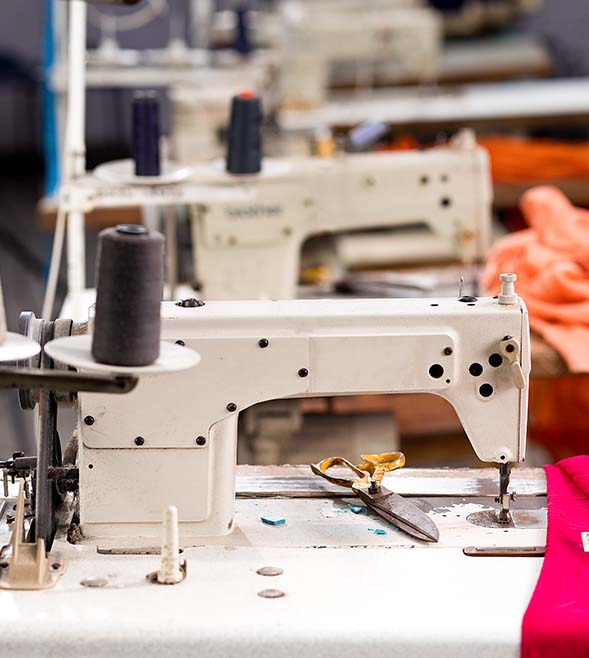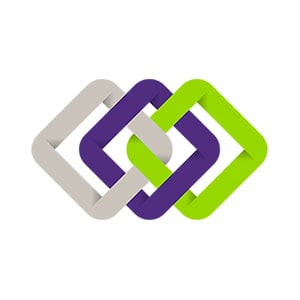-
Financial reporting and accounting advisory services
You trust your external auditor to deliver not only a high-quality, independent audit of your financial statements but to provide a range of support, including assessing material risks, evaluating internal controls and raising awareness around new and amended accounting standards.
-
Accounting Standards for Private Enterprises
Get the clear financial picture you need with the accounting standards team at Doane Grant Thornton LLP. Our experts have extensive experience with private enterprises of all sizes in all industries, an in-depth knowledge of today’s accounting standards, and are directly involved in the standard-setting process.
-
International Financial Reporting Standards
Whether you are already using IFRS or considering a transition to this global framework, Doane Grant Thornton LLP’s accounting standards team is here to help.
-
Accounting Standards for Not-for-Profit Organizations
From small, community organizations to large, national charities, you can count on Doane Grant Thornton LLP’s accounting standards team for in-depth knowledge and trusted advice.
-
Public Sector Accounting Standards
Working for a public-sector organization comes with a unique set of requirements for accounting and financial reporting. Doane Grant Thornton LLP’s accounting standards team has the practical, public-sector experience and in-depth knowledge you need.
-
Tax planning and compliance
Whether you are a private or public organization, your goal is to manage the critical aspects of tax compliance, and achieve the most effective results. At Doane Grant Thornton, we focus on delivering relevant advice, and providing an integrated planning approach to help you fulfill compliance obligations.
-
Research and development and government incentives
Are you developing innovative processes or products, undertaking experimentation or solving technological problems? If so, you may qualify to claim SR&ED tax credits. This Canadian federal government initiative is designed to encourage and support innovation in Canada. Our R&D professionals are a highly-trained, diverse team of practitioners that are engineers, scientists and specialized accountants.
-
Indirect tax
Keeping track of changes and developments in GST/HST, Quebec sales tax and other provincial sales taxes across Canada, can be a full-time job. The consequences for failing to adequately manage your organization’s sales tax obligations can be significant - from assessments, to forgone recoveries and cash flow implications, to customer or reputational risk.
-
US corporate tax
The United States has a very complex and regulated tax environment, that may undergo significant changes. Cross-border tax issues could become even more challenging for Canadian businesses looking for growth and prosperity in the biggest economy in the world.
-
Cross-border personal tax
In an increasingly flexible world, moving across the border may be more viable for Canadians and Americans; however, relocating may also have complex tax implications.
-
International tax
While there is great opportunity for businesses looking to expand globally, organizations are under increasing tax scrutiny. Regardless of your company’s size and level of international involvement—whether you’re working abroad, investing, buying and selling, borrowing or manufacturing—doing business beyond Canada’s borders comes with its fair share of tax risks.
-
Transfer pricing
Transfer pricing is a complex area of corporate taxation that is concerned with the intra-group pricing of goods, services, intangibles, and financial instruments. Transfer pricing has become a critical governance issue for companies, tax authorities and policy makers, and represents a principal risk area for multinationals.
-
Succession & estate planning
Like many private business owners today, you’ve spent your career building and running your business successfully. Now you’re faced with deciding on a successor—a successor who may or may not want your direct involvement and share your vision.
-
Tax Reporting & Advisory
The financial and tax reporting obligations of public markets and global tax authorities take significant resources and investment to manage. This requires calculating global tax provision estimates under US GAAP, IFRS, and other frameworks, and reconciling this reporting with tax compliance obligations.

-
Transactions
Our transactions group takes a client-centric, integrated approach, focused on helping you make and implement the best financial strategies. We offer meaningful, actionable and holistic advice to allow you to create value, manage risks and seize opportunities. It’s what we do best: help great organizations like yours grow and thrive.
-
Restructuring
We bring a wide range of services to both individuals and businesses – including shareholders, executives, directors, lenders, creditors and other advisors who are dealing with a corporation experiencing financial challenges.
-
Forensics
Market-driven expertise in investigation, dispute resolution and digital forensics
-
Cybersecurity
Viruses. Phishing. Malware infections. Malpractice by employees. Espionage. Data ransom and theft. Fraud. Cybercrime is now a leading risk to all businesses.
-
Consulting
Running a business is challenging and you need advice you can rely on at anytime you need it. Our team dives deep into your issues, looking holistically at your organization to understand your people, processes, and systems needs at the root of your pain points. The intersection of these three things is critical to develop the solutions you need today.
-
Creditor updates
Updates for creditors, limited partners, investors and shareholders.

-
Governance, risk and compliance
Effective, risk management—including governance and regulatory compliance—can lead to tangible, long-term business improvements. And be a source of significant competitive advantage.
-
Internal audit
Organizations thrive when they are constantly innovating, improving or creating new services and products and envisioning new markets and growth opportunities.
-
Certification – SOX
The corporate governance landscape is challenging at the best of times for public companies and their subsidiaries in Canada, the United States and around the world.
-
Third party assurance
Naturally, clients and stakeholders want reassurance that there are appropriate controls and safeguards over the data and processes being used to service their business. It’s critical.
-
 Assurance Important changes coming to AgriInvest in 2025AgriInvest is a business risk management program that helps agricultural producers manage small income declines and improve market income.
Assurance Important changes coming to AgriInvest in 2025AgriInvest is a business risk management program that helps agricultural producers manage small income declines and improve market income. -
 ASPE Sec. 3041 Agriculture Understanding and applying the new ASPE Section 3041 AgricultureThe Canadian Accounting Standards Board (AcSB) has released new guidance on recognizing, measuring and disclosing biological assets and the harvested products of bio assets.
ASPE Sec. 3041 Agriculture Understanding and applying the new ASPE Section 3041 AgricultureThe Canadian Accounting Standards Board (AcSB) has released new guidance on recognizing, measuring and disclosing biological assets and the harvested products of bio assets. -
 Tax alert Agricultural Clean Technology ProgramThe Agricultural Clean Technology Program will provide financial assistance to farmers and agri-businesses to help them reduce greenhouse gas (GHG) emissions.
Tax alert Agricultural Clean Technology ProgramThe Agricultural Clean Technology Program will provide financial assistance to farmers and agri-businesses to help them reduce greenhouse gas (GHG) emissions. -
 Tax alert ACT Program – Research and Innovation Stream explainedThe ACT Research and Innovation Stream provides financial support to organizations engaged in pre-market innovation.
Tax alert ACT Program – Research and Innovation Stream explainedThe ACT Research and Innovation Stream provides financial support to organizations engaged in pre-market innovation.
-
Builders And Developers
Every real estate project starts with a vision. We help builders and developers solidify that vision, transform it into reality, and create value.
-
Rental Property Owners And Occupiers
In today’s economic climate, it’s more important than ever to have a strong advisory partner on your side.
-
Real Estate Service Providers
Your company plays a key role in the success of landlords, investors and owners, but who is doing the same for you?

-
Mining
There’s no business quite like mining. It’s volatile, risky and complex – but the potential pay-off is huge. You’re not afraid of a challenge: the key is finding the right balance between risk and reward. Whether you’re a junior prospector, a senior producer, or somewhere in between, we’ll work with you to explore, discover and extract value at every stage of the mining process.
-
Oil & gas
The oil and gas industry is facing many complex challenges, beyond the price of oil. These include environmental issues, access to markets, growing competition from alternative energy sources and international markets, and a rapidly changing regulatory landscape, to name but a few.
In the first article of our Lessons Learned from COVID-19 series, we discuss the role an innovation mindset has on the resiliency of Canadian businesses.
The one commonality shared by every resilient company in our roundtable series and conversations with our clients, was having leaders and employees who showcased a willingness to accept change—and to think and conduct business differently in the face of it. When times got tough, these leaders took a step back, examined their existing processes, products and frameworks, and carefully evaluated which would work—and which wouldn’t—in the new COVID‑19 reality.
In this context, innovation wasn’t limited to technology adoption. Some businesses used the downtime to foster customer goodwill and strengthen their brand, while others leveraged the opportunity to revamp their business model or develop new revenue streams. There are countless stories of brick-and-mortar retailers—like shoe stores and garden centres, for instance—that used COVID‑19 as an opportunity to enter the e-commerce world. Doctors started offering virtual appointments. Professional sports teams found ways to play again, albeit without fans in the stands. And a growing number of restaurants started offering take-out and delivery options.
After seeing a significant dip in demand for marketing materials and print advertising, in the early days of the pandemic, one Alberta graphics company quickly pivoted to produce things that were in demand, such as face shields, sneeze guards and social distancing signs for hospitals and businesses. This shift allowed the company to continue generating revenue during a typically weak earnings cycle in a normal year, and thereby quickly bring their employees back to work.
The bottom line is that innovation doesn’t have to be expensive or wide-sweeping—and it doesn’t have to involve technology upgrades. Depending on the situation, small, incremental changes to your operations and processes can be just as effective. You can garner inspiration from your direct competitors, scale down some of the innovative moves made by your favourite global brands or simply survey your customers to find out how you can serve them better. The key is to commit to moving forward, trying new things and being willing to pivot if the changes don’t seem to be working or if circumstances change.
The path to resiliency: How to up your innovation gameThe COVID-19 crisis forced businesses to rethink assumptions, make critical decisions and learn from the outcomes at an unprecedented pace. This required leaders to consider whether their organization’s rate of learning and change was fast enough to create a competitive advantage. To remain relevant amid these new realities, organizations must embrace a mindset, culture and leadership style that prioritizes continuous learning, agility and innovation. Below are just a few ways to clear a path for innovation within your business. Act, fail fast, learn and repeatYou don’t have to be 100 percent certain an idea is going to work before you test it. In times of crisis, acting quickly—even without all the facts—can make the difference between thriving and just surviving. Just be sure to learn as you go, rethink your assumptions and be ready to pivot quickly if the idea or action doesn’t provide the results you were hoping for. Pay close attention to your competitorsIn times of uncertainty, it can be helpful to see how others are tackling a situation. This is an opportunity to learn from their successes and missteps. While you don’t have to take their specific path, becoming familiar with their path can help inform your own decisions when quick decisions are needed. Diversify your train of thoughtGreat ideas often come from fresh perspectives. Hiring someone from outside of your organization—or connecting with other business leaders—can be an excellent way to identify new opportunities and move past seemingly-insurmountable roadblocks. Build a continuous “learning loop”Regularly examining your business environment and your organization’s strengths and weaknesses can help shed light into your key assumptions and identify opportunities to rethink outdated approaches. This can position you to develop plans around your priorities, align your business processes with your objectives and execute iteratively to create a continuous learning loop. |
To read the full report, "A blueprint for moving forward: Lessons learned from COVID-19," download the PDF.

